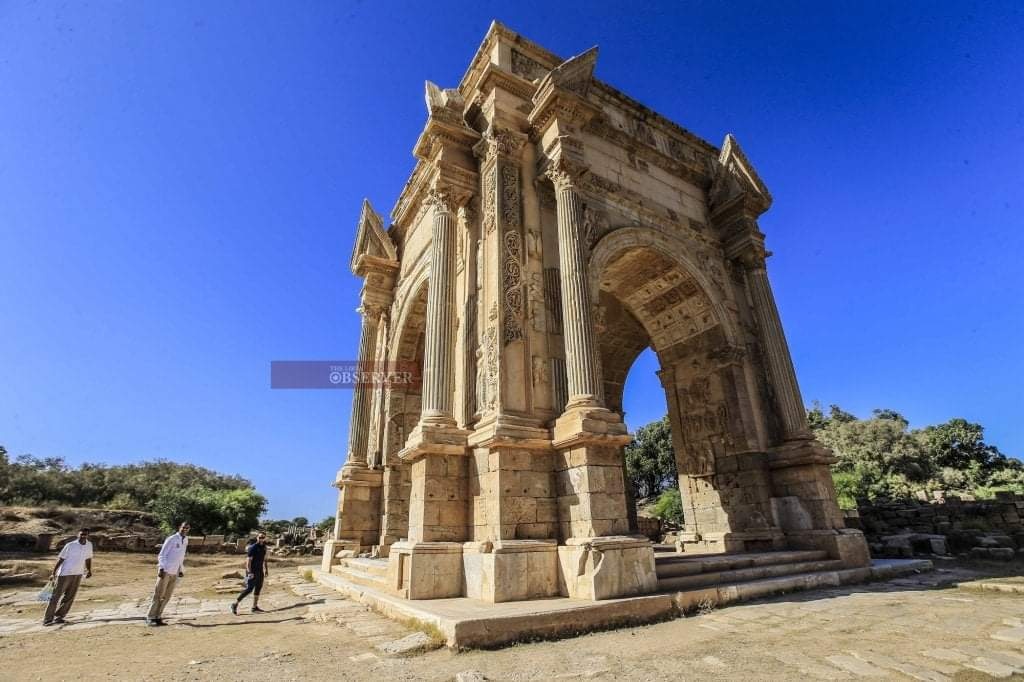Libya is one of the most beautiful Arab countries, which is rich in a long history that extends through ancient eras, where we find ancient Roman monuments in their most beautiful pictures in the city of Libya, as well as sites that UNESCO has included on the World Heritage List, below we tried to present a number of landmarks of the country.
The Red Castle Museum
The museum is located in the Castle of Tripoli, in the capital of Libya. It was in the beginning an ammunition warehouse, where the Italians built it during their occupation of the region in 1919, then it turned into the classic museum, to turn its name to the Libyan Museum in 1941. The importance of the museum is due to the fact that it displays a number of paintings and collections dating back to ancient times, including the Roman, Phoenician and Greek. In 1982, UNESCO financed a project to establish a museum complex in the Red Castle, in order to preserve that valuable history.
The Gurgi Mosque
The mosque overlooks the Arch of Marcus Aurelius and Al-Akwash Street in the center of the old city of Tripoli. It was built by Mustafa Gurgi, head of the maritime dock in 1834, and it is designed in the European style, where the marble and various tiles were used, and it is decorated from the inside with Andalusian ornaments and engravings of different geometric shapes and plants, as well as the verses of the Holy Qur’an. The minaret of the mosque is also distinguished by its distinctive green color, with a height of 25 meters.
The Arch of Marcus Aurelius
The Arch of Marcus Aurelius is located in the city of Tripoli. It is famous for being the only monument remaining from the Roman era. It was built in the year 163 and named after the Roman Emperor Marcus Aurelius.
The Clock Tower
The tower is located in the old city of Tripoli. It consists of a small tower with a bell clock on top that rings at the head every hour until the Second World War, which inflicted heavy damage on it. The tower dates back to 1866, where it took four years to build on orders of the governor Ali Reda Pasha, it was designed in the style of Turkish architecture at a height of 18 meters.
The Royal Palace of Tripoli
The palace was built in 1943 to be the seat of the Italian ruler at the time, Italo Balbo, but with the departure of the Italian forces, it became a royal palace inhabited by King Idris until 1964, but the American raid on Libya in 1986 caused great damage to the palace and was later transferred to the Libya Museum.
The Benghazi Zoo ‘Bosco’
It is located in the Al-Fuwayhat area in the city of Benghazi as it is also called, Benghazi Tourist Park. It was established in 1956 under the management of the Italian forces at that time, and it includes many types of plants and animals as well as dense pine trees, in addition to small lakes and waterfalls and a children's amusement park. The word Bosco in Italian means small forest.
The Acacus Mountains
The Acacus Mountains are located in southwestern Libya. The UNESCO included this region on the World Heritage List in 1985, as this region is rich in many different landscapes, perhaps the most famous of which are colored sand winds and rock arches, as well as a large number of paintings on rock and carvings that narrate the natural history of the region, where there are carved paintings with many animals such as giraffes and elephants, as well as paintings that reflect human life in the past.
Waw An-Namus Mountain
It is located within the eastern Fezzan region. It is one of the most beautiful tourist places in Libya, which is an extinct volcanic mountain with a crater of about 20 km, spreading around it bright and contrasting lakes with a number of plants such as reeds, bamboo and palms, at a height of 575 meters.
Villa Celine
The villa is located in Celine area in the outskirts of Khums. It was built in the third century AD, it contains 46 rooms with a total area of about 800 square meters. The Villa is one of the most magnificent Roman architecture in the world, with alabaster walls, water fountains and fruit trees, as well as the famous mosaic panels that spread throughout the palace on the floor of its bedrooms and libraries.
Uweinat Mountain
The area of the mountain is about 1500 square kilometers and is located on the borders between Egypt, Sudan and Libya. UNESCO intends to declare it on the World Heritage List, due to its great cultural and historical value. It was inhabited by many animals such as ostriches and gazelles.
Leptis Magna
It is located in Lebdah, 120 km east of Tripoli. It is one of the most beautiful and important Roman tourist attractions in Libya. It has been designated a UNESCO World Heritage Site, its is attributed to the Roman Emperor Septimius Severus, and it is characterized by the presence of many monuments, which overlooking the Mediterranean Sea.
The City of Ghadames
It is located in the western part of the country. It is one of the oldest cities in Libya, and it is also one of the cities that have been classified on the UNESCO World Heritage List and it is still preserved in the desert until now. The city of Ghadames is divided into three sections: the old city where the wall and the mosque, the palm tree, and the modern city where the new buildings are.

